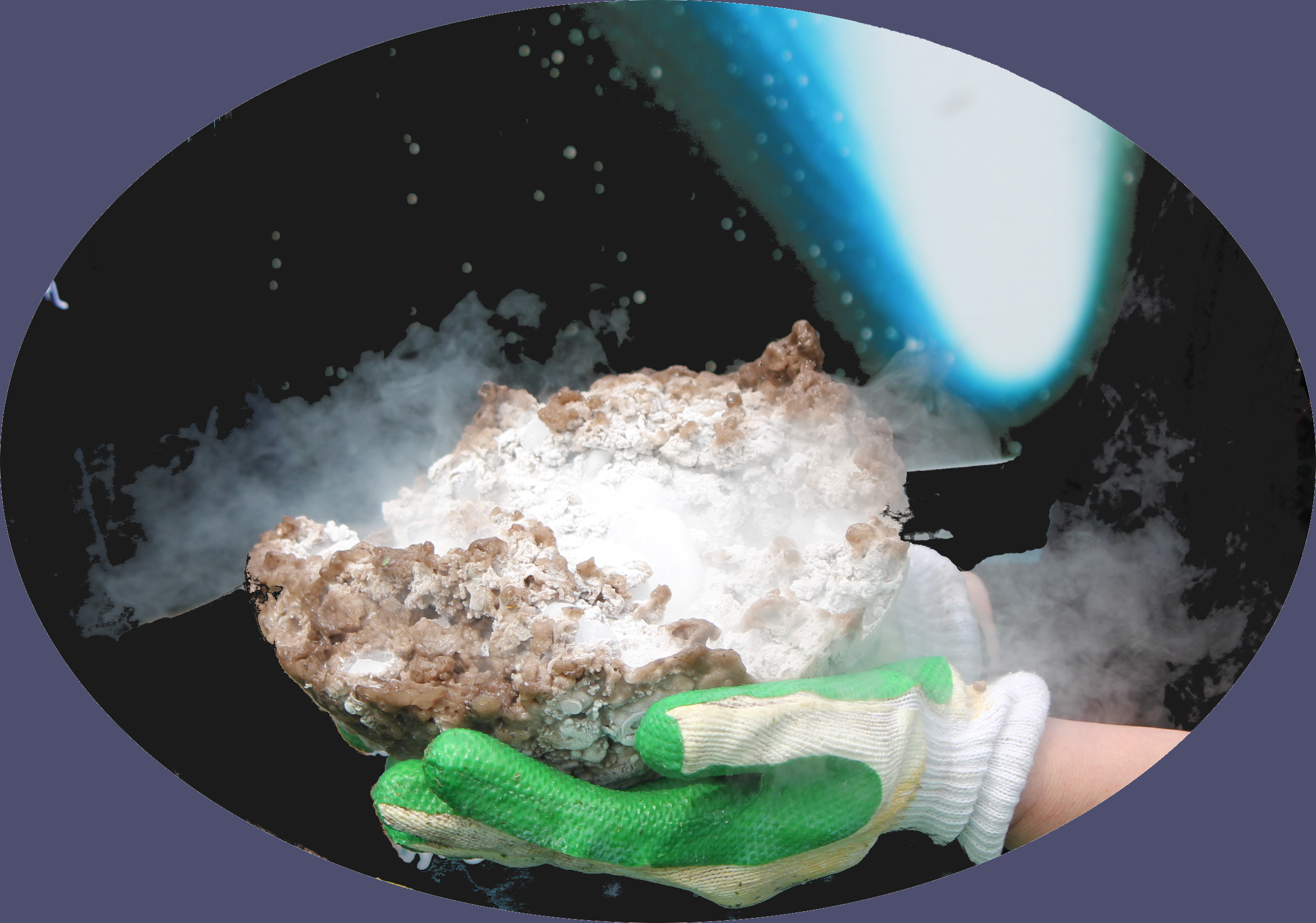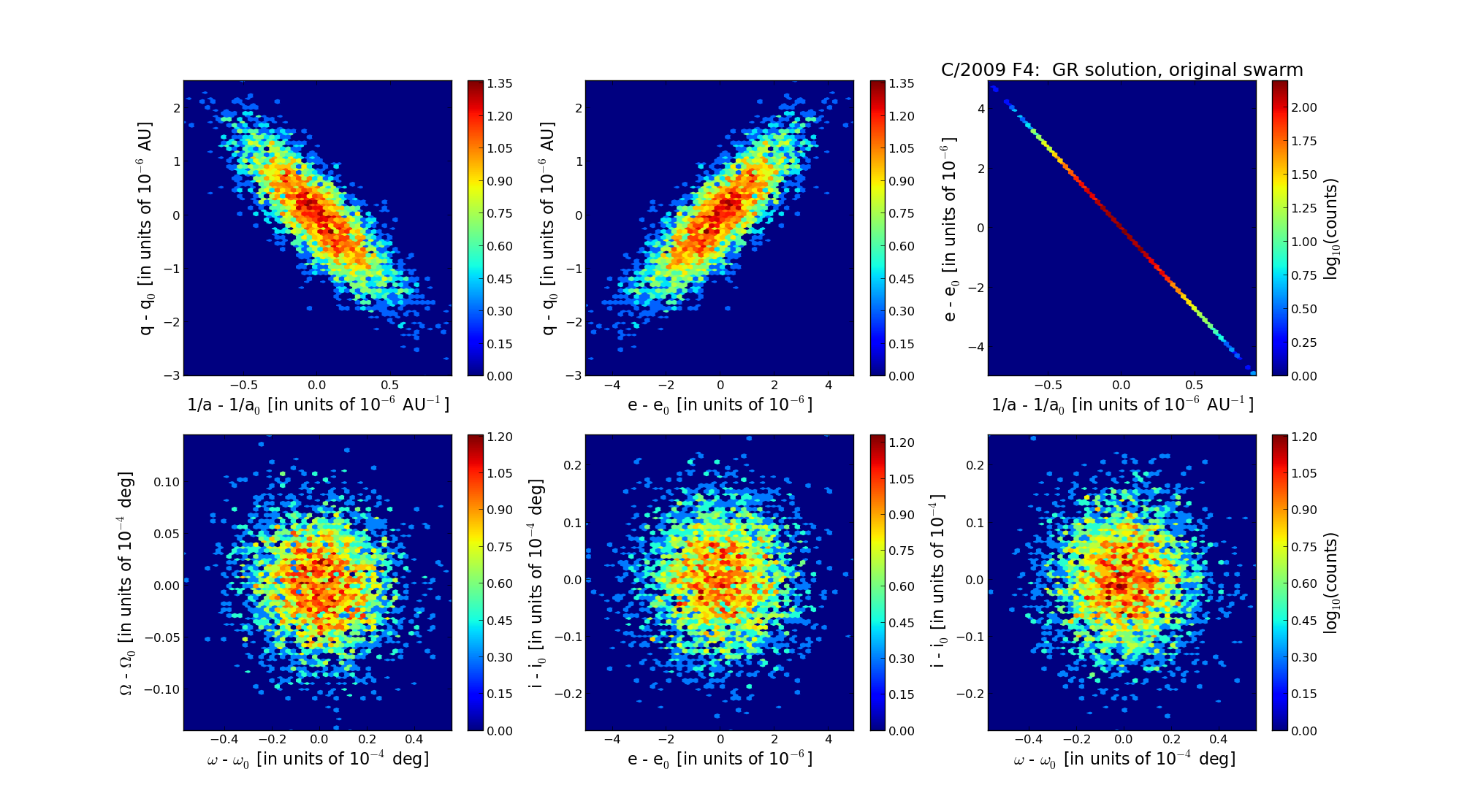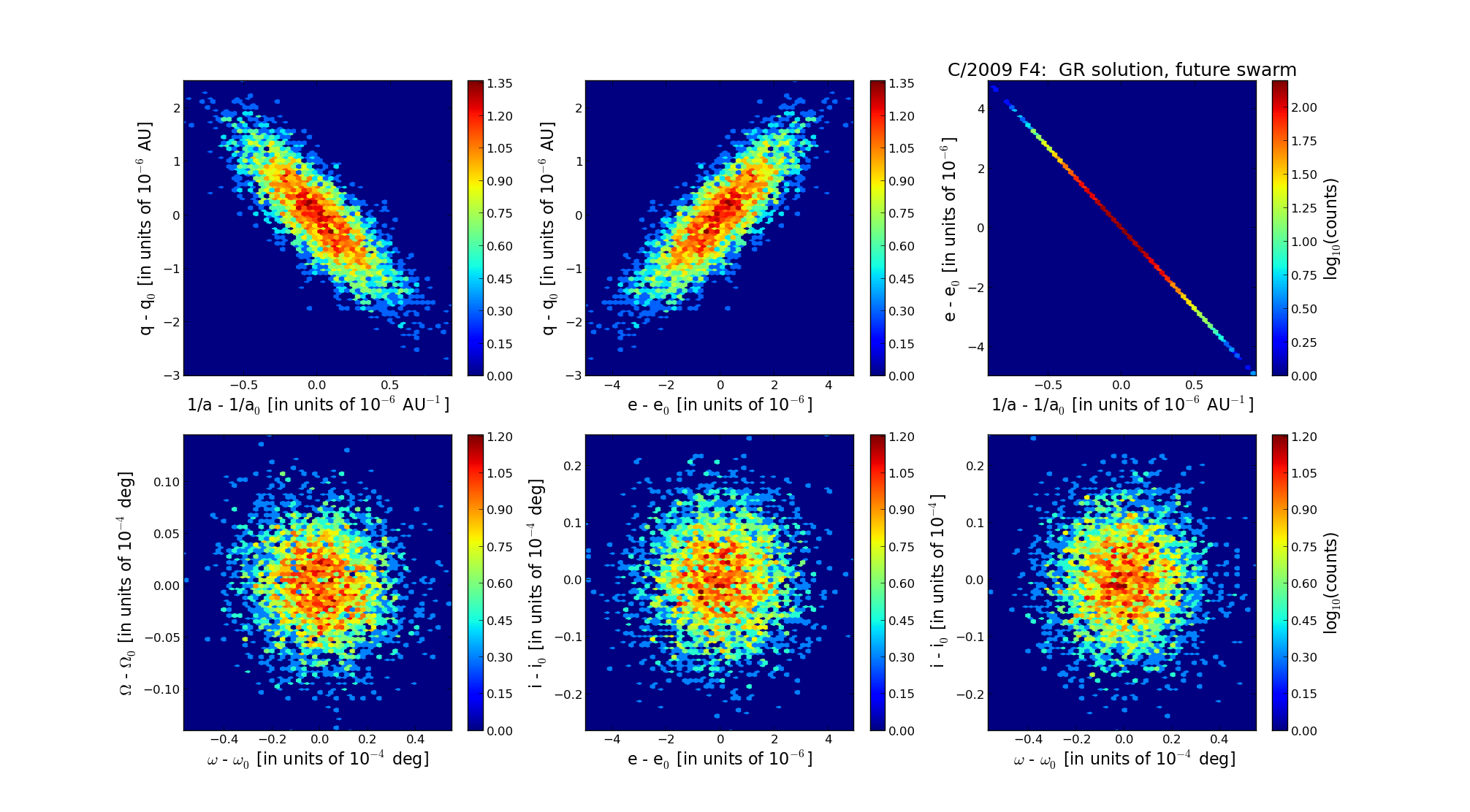| Solar System Dynamics & Planetology Group |
 |
C/2009 F4 McNaught |  |
| Solar System Dynamics & Planetology Group |
 |
C/2009 F4 McNaught |  |
| number of observations | 1204 |
| number of residuals | 2383 |
| data interval | 2009 Mar. 19 — 2015 Aug. 20 |
| rms [arcsec] | 0.51 |
| orbit quality class | 1a+ |
| Epoch (TT) | 20111225.0 | = JD 2455920.5 |
| time of perihelion passage (TT) | 20111231.892450 | ± 0.000207 |
| perihelion distance | 5.45486596 | ± 0.00000076 |
| eccentricity | 1.00159284 | ± 0.00000143 |
| argument of perihelion [deg] | 260.383469 | ± 0.000015 |
| longitude of the ascending node [deg] | 53.584371 | ± 0.000004 |
| inclination [deg] | 79.347586 | ± 0.000007 |
| inverse semimajor axis [10-6 au-1] | -292.00 | ± 0.26 |

| Epoch (TT) | 17050722 | |
| time of perihelion passage (TT) | 20111231.919769 | ± 0.000207 |
| perihelion distance | 5.45170706 | ± 0.00000064 |
| eccentricity | 0.99977426 | ± 0.00000140 |
| argument of perihelion [deg] | 260.451489 | ± 0.000015 |
| longitude of the ascending node [deg] | 53.538709 | ± 0.000004 |
| inclination [deg] | 79.343265 | ± 0.000007 |
| inverse semimajor axis [10-6 au-1] | 41.41 | ± 0.26 |

| Epoch (TT) | 23190306 | |
| time of perihelion passage (TT) | 20120101.679954 | ± 0.000213 |
| perihelion distance | 5.45148748 | ± 0.00000074 |
| eccentricity | 0.99942994 | ± 0.00000139 |
| argument of perihelion [deg] | 260.353831 | ± 0.000015 |
| longitude of the ascending node [deg] | 53.555152 | ± 0.000004 |
| inclination [deg] | 79.352452 | ± 0.000007 |
| inverse semimajor axis [10-6 au-1] | 104.57 | ± 0.26 |